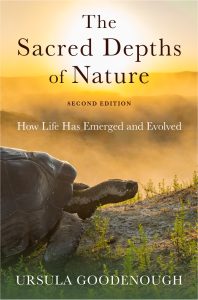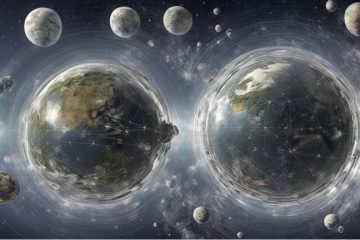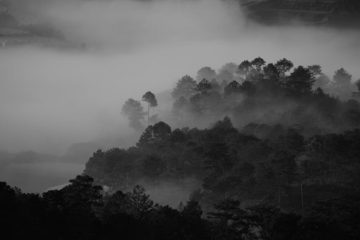The Sacred Depths of Nature: 25 Years Later

I wrote the first edition of The Sacred Depths of Nature during a 3-month marathon in the spring of 1997, weaving together a lifetime of science-based understandings as a biology researcher/teacher with newly acquired understandings of spiritual perspectives, histories, and languages, where a key mentor was philosopher Loyal Rue. In the fall of 2021, I launched a 5-month marathon to fact-update the first edition and, more importantly, to deepen both sets of understandings. I anchored the science-based perspectives in the concepts of emergence (see below) and self-hood that have been developed by biologist Terrence Deacon, and the spiritual reflections were nurtured by the heartfelt responses of readers and participants in book-centered gatherings and internet forums. The new edition was released in February 2023, and initial reviewer responses have been deeply enthusiastic.
In 1997, the term “religious naturalism” was being bandied about, and I offered it in the first edition to denote my point of view. By 2014 I joined several others in founding the non-profit Religious Naturalist Association (RNA), where we shifted from the “-ism” to the concept of a religious naturalist orientation (RN). In the new book edition, I offer a final section that outlines the RN perspective, where a key concept is that religious naturalists Take Nature to Heart. Other associations that are also anchored in this concept are linked here.
Emergence, which is central to the book, provides a vital antidote to the fear, held by many, that science-based frameworks reduce everything to atoms and molecules and hence sully the beautiful complexity of the natural world and human experience. Emergence describes the generation of “something else from nothing but.” Molecules—the nothings buts—have shapes generated by the chemical bonds that form between their atoms, and these shapes then engage in relationships with the shapes of other molecules to generate novel processes—something elses—such as enzyme catalysis or calcium uptake or awareness. Emergent processes can, in turn, serve as the nothing buts for yet more complex something elses—basal awareness, for example, is the nothing but for the phenomenon we call consciousness. Scientists engage in reduction in order to know who the players are and how they interact, but the goal is always to understand how they give rise to emergent properties and emergent dynamics and self-hood. We emergentists are as interested in the beauty of complexity as anyone!
So what has changed since the first writing of Sacred Depths?
The first chapter on cosmic and planetary history was carefully vetted and updated by astrophysicist Joel Primack, to whom I am deeply grateful. He asked that I note that “some aspects of this history have been simplified,” a polite way of saying that some aspects were, to his mind, hand-waved. Guilty as charged. Happily, many detailed accounts of cosmology are available and cited in the extensive bibliography, including books by Primack.
Chapter 2 presents my versions of Terrence Deacon’s concepts of emergence and self-hood in describing the origins and properties of lifeforms, replacing the previous hand-waving concept of an original “RNA World.” These paradigms then permeate the rest of the book. In Figure 3.1, I make the bold move of offering textbook-style diagrams of DNA, RNA, etc., a move I didn’t make in the first edition since I feared it would scare off many of the people I sought to reach. But in our post-Covid world, these molecules have become household words. Therefore, in this and the next three chapters on physiology, embryology, and evolution, I make more extensive use of molecular language and metaphors than I did in the first edition.
Our understandings of biological evolution have, of course, been transformed in the past 25 years via DNA-sequencing technologies, generating stunning evolutionary trees that underscore the relationships and interdependencies that humans share with all of life (Chapter 6).
Chapters 7 and 8 explore what is understood about the emergence of awareness, brains, and feelings. While much is still not understood, much is known, and much is new. Here the linkage to the spiritual is readily made, and I contrast my non-theistic spirituality with those that posit a supernatural dimension.
Chapter 9–11, on Sex, Intimacy, and Death, closely follow their first-edition antecedents since these understandings are long-established. My reflections on death as the price we pay to have our shimmering existence have been deeply appreciated by many readers and are fully retained.
Chapter 12, on Human Evolution, has been largely re-written to bring in the seminal understandings derived from the last 25 years of archaeology and genome sequencing.
Chapter 13 is brand-new. In the Introduction to the first edition I had written, “If religious emotions can be elicited by natural reality—and I believe that they can—then the story of Nature [Everybody’s Story] has the potential to serve as the cosmos for the global ethos that we need to articulate. I will not presume to suggest what this ethos might look like. Its articulation must be a global project.” I’ve since come to understand that while its full articulation must indeed be a global project, this doesn’t mean that it is presumptuous to offer suggestions, and I confess that my hesitation was driven largely by my deep ignorance of moral/ethical frameworks. But I’ve read and listened attentively since then, and Chapter 13 offers my emergent understandings of both human-human and human-non-human morality, the latter called ecomorality.
So, to summarize, the second edition is a hybrid. I’ve retained what readers have praised, like the science/reflection format, the brevity (225 pp.), and many of the personal spiritual reflections, but most of it is new. Oxford University Press granted me full use of color, and the vibrant figures and frontispiece photographs grace the pages. Most important, the new edition is far more coherent because, 25 years later, my religious orientation has come to cohere. I am deeply grateful to the many people who enabled that process and cheered me on.
#
Ursula Goodenough is Professor of Biology Emerita at Washington University who retired to Martha’s Vineyard in 2017. She taught cell biology and evolution and engaged in research that focused on the sexual cycle of the green soil alga Chlamydomonas, on ciliary motility, and on algal biofuel precursors. She is a fellow of the American Academy of Arts and Sciences and the American Microbiology Society, a member of the National Academy of Sciences, and served as president of the American Society for Cell Biology. She and many others are developing what is called a religious naturalist orientation. A new edition of her book, The Sacred Depths of Nature: How Life Emerged and Evolved (Oxford University Press), describes her understandings of this orientation.
Counterpoint blogs may be reprinted with the following acknowledgement: “This article was published by Counterpoint: Navigating Knowledge on 14 June 2023.” The views and opinions expressed on this website, in its publications, and in comments made in response to the site and publications are those of the author(s) and do not necessarily reflect the views and opinions of Counterpoint: Navigating Knowledge, its founders, its staff, or any agent or institution affiliated with it, nor those of the institution(s) with which the author is affiliated. Counterpoint exists to promote vigorous debate within and across knowledge systems and therefore publishes a wide variety of views and opinions in the interests of open conversation and dialogue.



